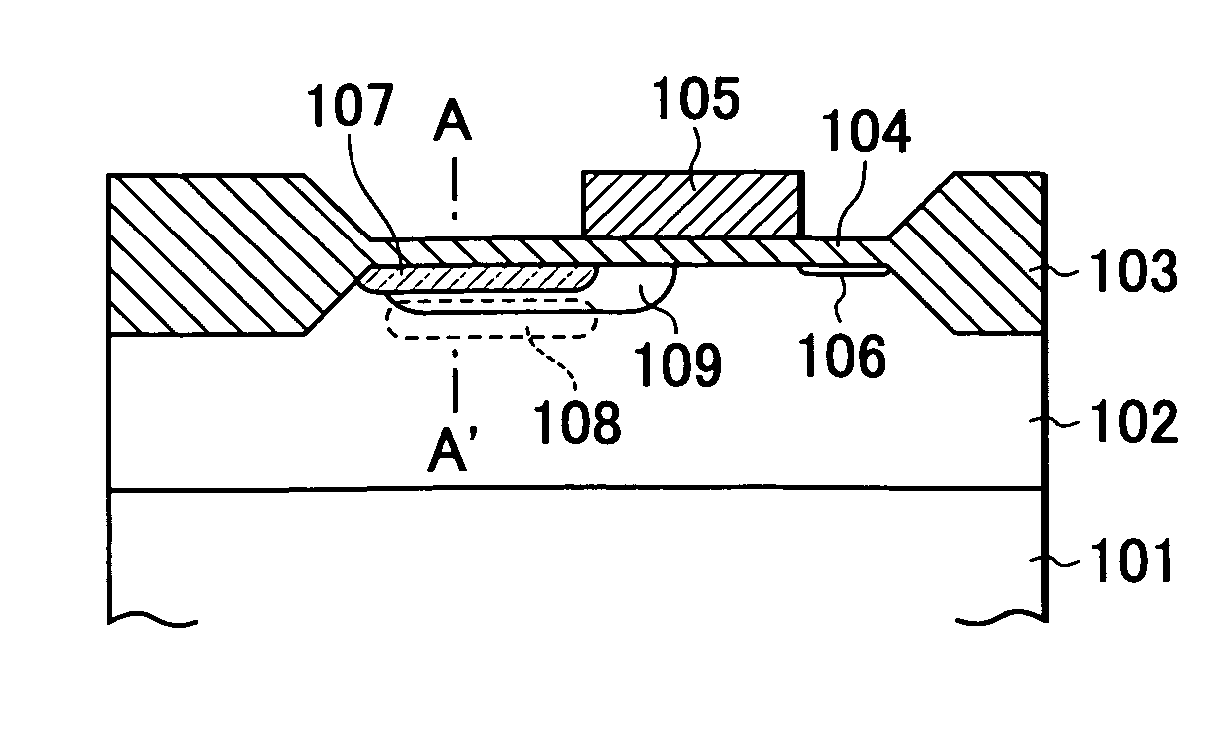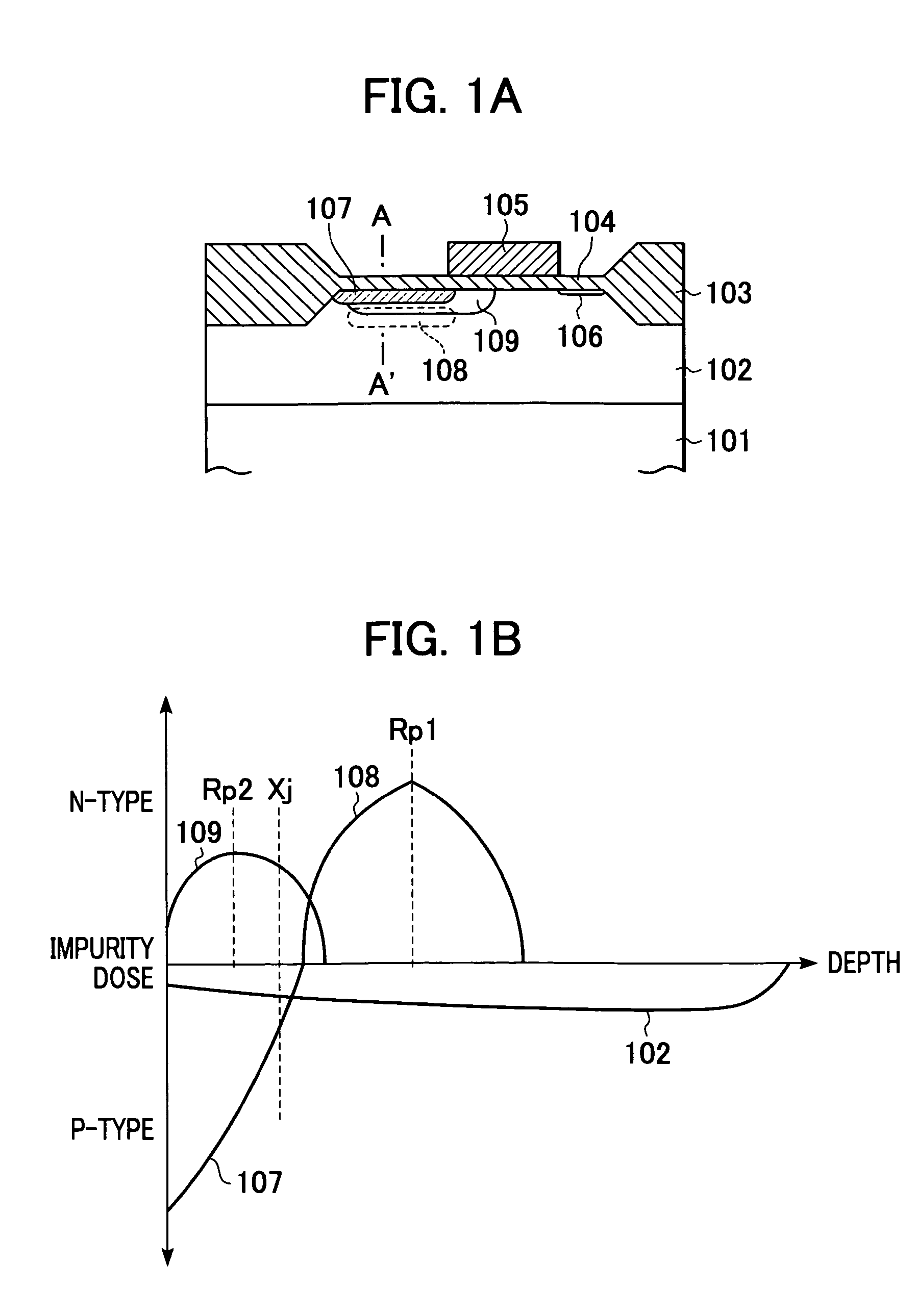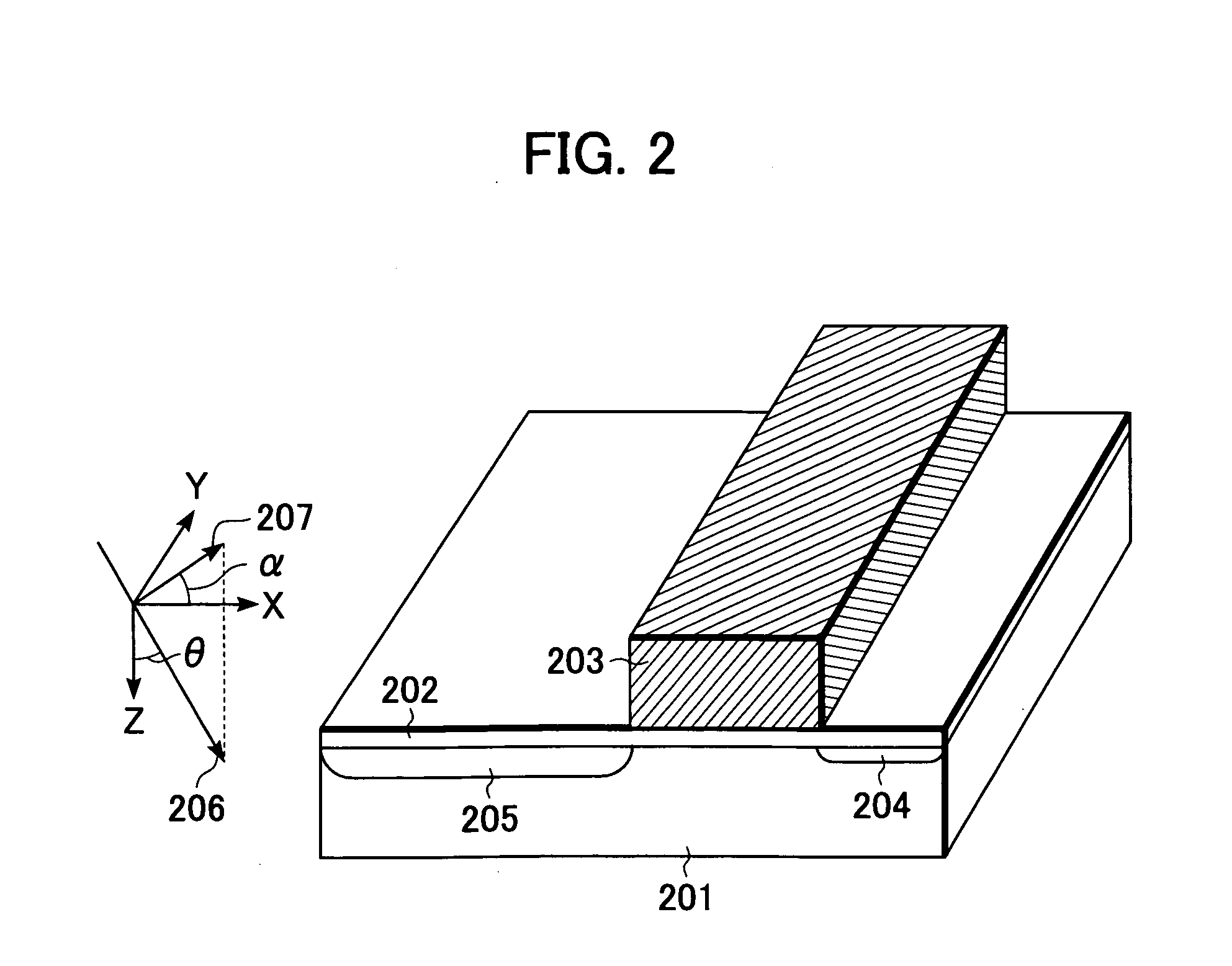Solid-state image sensor, production method for solid-state image sensor, and camera using solid-state image sensor
- Summary
- Abstract
- Description
- Claims
- Application Information
AI Technical Summary
Benefits of technology
Problems solved by technology
Method used
Image
Examples
first embodiment
[First Embodiment]
FIG. 1A is an explanatory view of a solid-state image sensor according to a first embodiment of the present invention, and FIG. 1B is a graph showing an impurity concentration distribution at a cross section taken along line A-A′ in FIG. 1A.
Referring to FIG. 1A, a solid-state image sensor of the first embodiment includes, in each pixel, a semiconductor substrate 101, a p-type well region 102, a selective oxide 103, a gate oxide 104, and a transfer gate 105. By turning the transfer gate 105 on, charges in a photodiode are read into an n-type diffusing region 106. The photodiode is of a buried type including a front p-type high-concentration layer 107, an n-type deep accumulation region 108, and an n-type shallow accumulation region 109. Unlike the shallow accumulation region 109, the deep accumulation region 108 does not extend up toward the transfer gate 105. That is, an impurity region of the shallow accumulation region 109 is provided adjacent to the transfer g...
second embodiment
[Second Embodiment]
While the deep accumulation region and the shallow accumulation region in the photodiode are formed by phosphorus implantation in the first embodiment, a deep accumulation region in a photodiode may be formed by arsenic implantation, as in a second embodiment.
The second embodiment of the present invention will be described with reference to FIG. 4. A solid-state image sensor of the second embodiment includes, in each pixel, a semiconductor substrate 401, a p-type well region 402, a selective oxide 403, a gate oxide 404, and a transfer gate 405. By turning the transfer gate 405 on, charges in a photodiode are read into an n-type diffusion region 406. The photodiode is of a buried type, including a front p-type high-concentration layer 407, an n-type deep accumulation region 408, and an n-type shallow accumulation region 409. In the second embodiment, the deep accumulation region 408 is formed by arsenic implantation. Since arsenic has a thermal diffusion constan...
third embodiment
[Third Embodiment]
While the deep accumulation region and the shallow accumulation region in the photodiode are formed by phosphorus implantation in the first embodiment, a shallow accumulation region of a photodiode may be formed by arsenic implantation, as in a third embodiment.
The third embodiment of the present invention will be described with reference to FIG. 5. Referring to FIG. 5, a solid-state image sensor of the third embodiment includes, in each pixel, a semiconductor substrate 501, a p-type well region 502, a selective oxide 503, a gate oxide 504, and a transfer gate 505. By turning the transfer gate 505 on, charges in a photodiode are read into an n-type diffusion region 506. The photodiode is of a buried type including a front p-type high-concentration layer 507, an n-type deep accumulation region 508, and an n-type shallow accumulation region 509. In the third embodiment, the shallow accumulation region 509 is formed by arsenic implantation. Since the thermal diffus...
PUM
 Login to View More
Login to View More Abstract
Description
Claims
Application Information
 Login to View More
Login to View More - R&D
- Intellectual Property
- Life Sciences
- Materials
- Tech Scout
- Unparalleled Data Quality
- Higher Quality Content
- 60% Fewer Hallucinations
Browse by: Latest US Patents, China's latest patents, Technical Efficacy Thesaurus, Application Domain, Technology Topic, Popular Technical Reports.
© 2025 PatSnap. All rights reserved.Legal|Privacy policy|Modern Slavery Act Transparency Statement|Sitemap|About US| Contact US: help@patsnap.com



